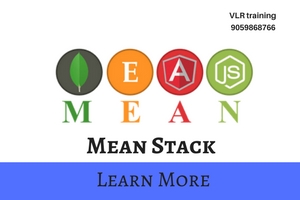© Copyright VLR Training | 2020

The MEAN Stack Developer course will establish you as an expert web developer in the MEAN stack. The term MEAN stack refers to a collection of JavaScript-based technologies used to develop web applications.MEAN is a combination of Mongo DB, Express, Angular, and Node.js. Mongo DB is a database system, Express is a back-end web framework. Angular is a front-end framework, and Node.js is a back-end runtime environment. The MEAN Stack Developer program is a structured learning path recommended by leading industry experts and ensures your mastery of full MEAN stack development. Learn how to create effective MEAN applications at VLR Training where the training about advanced integral concepts of MEAN will enable you to install and work in the Mongo Db and Node.js setup. To learn about the fundamentals of Mongo Db schema design, to generate REST APIs with Node.js and Express, and to create applications with Angular
60 Days
7:30 PM IST
Online
Deleting all documents
Common JS modules
Implementing the MVC pattern
Environment configuration files
© Copyright VLR Training | 2020